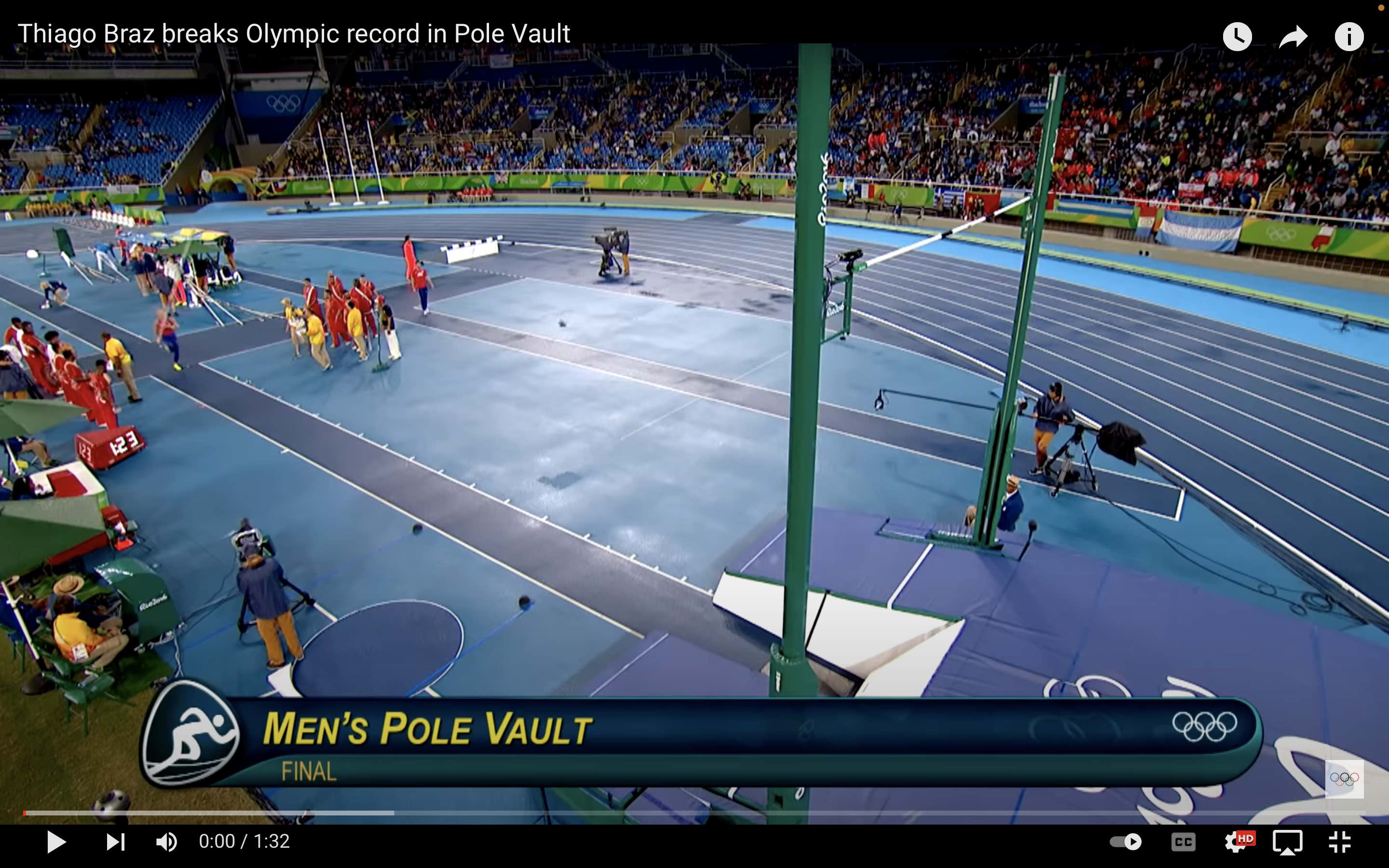How to Hit the High Notes

“It is not how high you get that matters—it’s how you get high.”
—W. Stephen Smith
Imagine you’re watching the Olympics on television. It’s time for pole vaulting.
You observe this amazing feat and think, wow, that’s for me! You seek out a coach who is known for training elite pole vaulters, and you schedule a session. You meet up with them at a field that is already set up for pole vaulting. The coach greets you, hands you an enormous pole, points to the distant crossbar, and says, “Okay, show me what you’ve got! Then come back here and I’ll tell you what you did wrong.”
This would never happen, of course.
But it’s really not all that different from what many singers experience in a first voice lesson with a new teacher, even as a complete beginner. You meet up with the teacher at their studio. The teacher greets you, sits down at the piano, invites you to sing a song, and then critiques what you did. A good teacher will first honestly compliment something that they loved about your voice or your interpretation of the song. But then they will pinpoint the things that didn’t go so well, and home in on those things—a couple of pitches that sounded flat, or a phrase where you ran out of breath. They may help you adjust your intonation and breathing in a way that improves your performance of the song, but you will probably leave the lesson with little understanding of why it improved, or how to globally improve your intonation and breathing.
Here is what actually happens when a beginning pole vaulter begins working with a coach: The coach begins by explaining the mechanics of vaulting, as they would even if you were not a beginner, because it would be both dangerous and counterproductive to presuppose a level of skill or understanding that you do not actually possess. Then they break down the sequence of movements necessary to perform a skillful pole vault and teach it to you in increments. Then they might hand you a pole, show you how to hold it, how to run with it, and how to plant it in preparation for your vault. And only then, if you feel confident and have demonstrated full understanding of all these components, would you be invited to attempt an actual vault.
Best practices for learning a given movement skill are best practices for learning all movement skills. Pole vaulting is a combination of coordinated movement skills. Singing is another. If you want to pole vault well, you must develop skill at the individual movements required for vaulting, coordinate them together, and work at improving your skill at each. The same is true for singing.
Breathing is movement. Phonating is movement. Articulation is movement. Even the creative thoughts flowing through your mind are movements, perhaps movements of the most important kind, because your intentions motivate all of the other movements.
If you want to sing well, learn the individual movements required for singing, coordinate them together, and continue developing your skill at each. That’s the most efficient and reliable way to develop the comprehensive skill set you need. And when you feel confident and possess a practical, integrated understanding of all of those movements, you will have an amazing time singing.
 “Comprehensive” is a word I have frequently used to describe my approach to teaching singing technique. Now that I’m drawing this comparison between singing and pole vaulting, though, it seems pretty ridiculous to assert that my approach to singing technique is “comprehensive.” There is no coach who would call his approach to pole vaulting comprehensive, because a system of teaching pole vaulting that leaves out any detail just isn’t going to fly (pun intended). You will reasonably expect any teacher’s approach to be comprehensive. If it isn’t, you may not notice that some details were left out, because you don’t know what you don’t know.
“Comprehensive” is a word I have frequently used to describe my approach to teaching singing technique. Now that I’m drawing this comparison between singing and pole vaulting, though, it seems pretty ridiculous to assert that my approach to singing technique is “comprehensive.” There is no coach who would call his approach to pole vaulting comprehensive, because a system of teaching pole vaulting that leaves out any detail just isn’t going to fly (pun intended). You will reasonably expect any teacher’s approach to be comprehensive. If it isn’t, you may not notice that some details were left out, because you don’t know what you don’t know.
But whatever style of music you love, whether you sing for pleasure or profit, you need a comprehensive approach that will yield a practical, integrated understanding of all the movements involved in singing. You need to feel like you know what you’re doing, if you want to feel confident and have an amazing time. This is what I feel many voice teaching methods fail to fully take into account. These methods just are not delivered in a way that is designed to instill a comprehensive, integrated skill set. They are delivered in a way that tries to address specific problems as they happen to arise. I say this because this is, for the most part, how I was taught, and how I observed countless other teachers teaching countless other singers.
I now teach singing in a way that is very different from the way I was taught. I structure my students’ courses of study more like the way pole vaulters train, presupposing nothing, so that no detail gets left out. In the past, however, I did teach the way I had been taught: A singer would show up for their lesson. I would ask them to perform a few exercises, listening carefully to decide what would be the Big Issue we would explore, and then have them perform an exercise to resolve whatever it was. Then they would sing a song or an aria, and I would help them apply the work we had just done to the way the Big Issue was messing up their song or aria. They would leave having improved their performance of the piece, but with incomplete understanding of why it improved or how to apply the things we had covered to their singing more globally.
This is far from the worst way to teach singing, and my students did make progress. It’s just that while I was helping them with the Big Issue, I was noticing all sorts of other areas that would be so great to work on, if only there were time. But when there is only time to deal with one or two issues, we pick the biggest ones, and then maybe next time we devote adequate time to jaw coordination, or how to inhale more fully, or how to release that high note more effortlessly… but that “next time” may never come, especially if the singer is busy preparing material for auditions. So stuff gets left out.
It’s not so much that voice teaching methods leave stuff out, as that the usual lesson structure is not designed to ensure that everything gets covered. A great teacher may know how to teach all aspects of singing, but if they are only able to cover the most important thing that comes up during the hour that you’re with them, they don’t get to share all of those aspects with you in a structured fashion. A less great teacher may know how to teach some of it very well, some of it less well, but some of it not at all. If you don’t already know how to do the things they don’t know how to teach, those things will slip through the cracks, but you may not realize it, because you don’t know what you don’t know. The teacher may not themselves realize that there is something important that they don’t know how to teach. All they know is that there is something they can do, that you cannot. That thing is likely to be something that came naturally to them, and they may conclude it has something to do with a natural talent that you lack, rather than being something that you could learn.
 I kicked off this blog post with one of my favorite Steve Smith quotes, and it is just as true for pole vaulting as it is for singing: It is not how high you get that matters—it’s how you get high.
I kicked off this blog post with one of my favorite Steve Smith quotes, and it is just as true for pole vaulting as it is for singing: It is not how high you get that matters—it’s how you get high.
A pole vaulter fixated on breaking records may be too easily frustrated or bored to put in the methodical practice that could lead to higher vaults. A singer fixated on hitting a high note may be too impatient to spend the time developing the breath coordination and vocal responsiveness required to sustain that note with full resonance and ease.
Both will fall flat in the absence of a comprehensive skill set.
(Pun intended)



